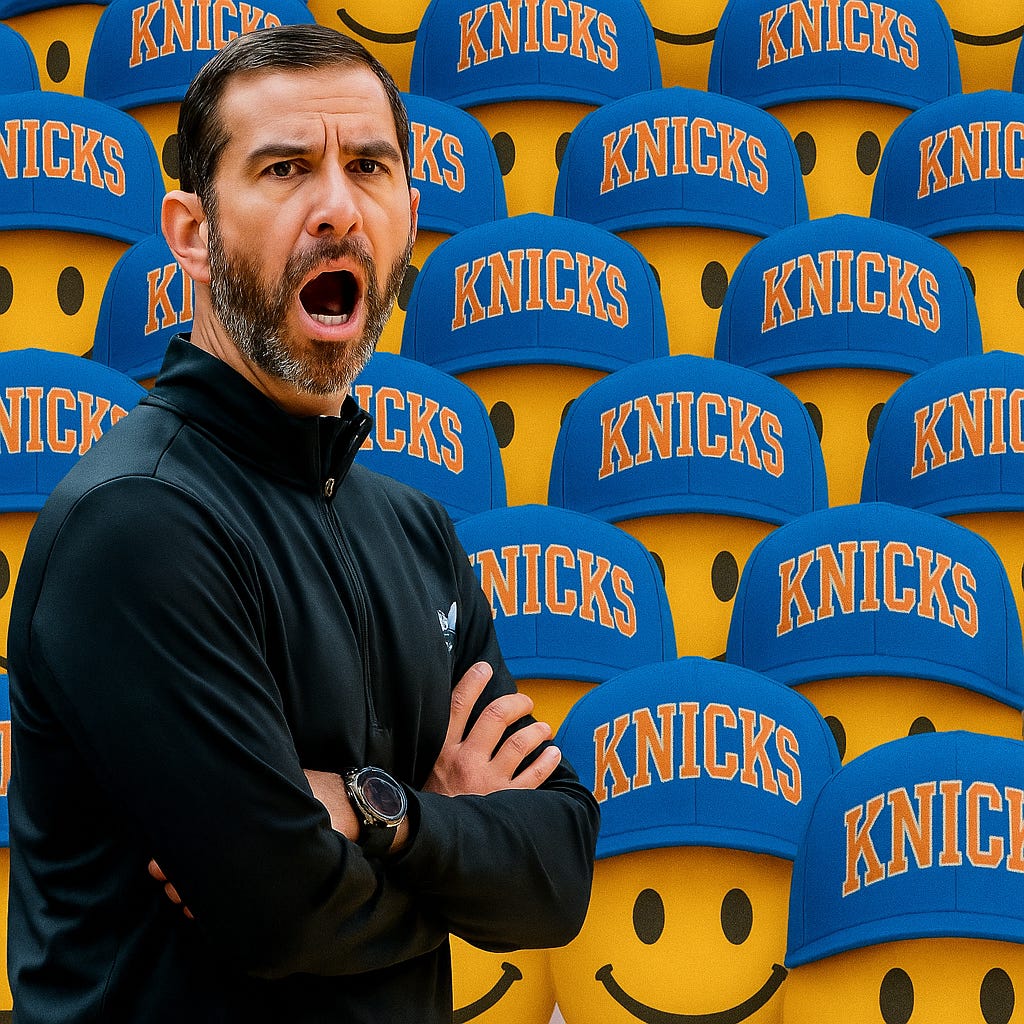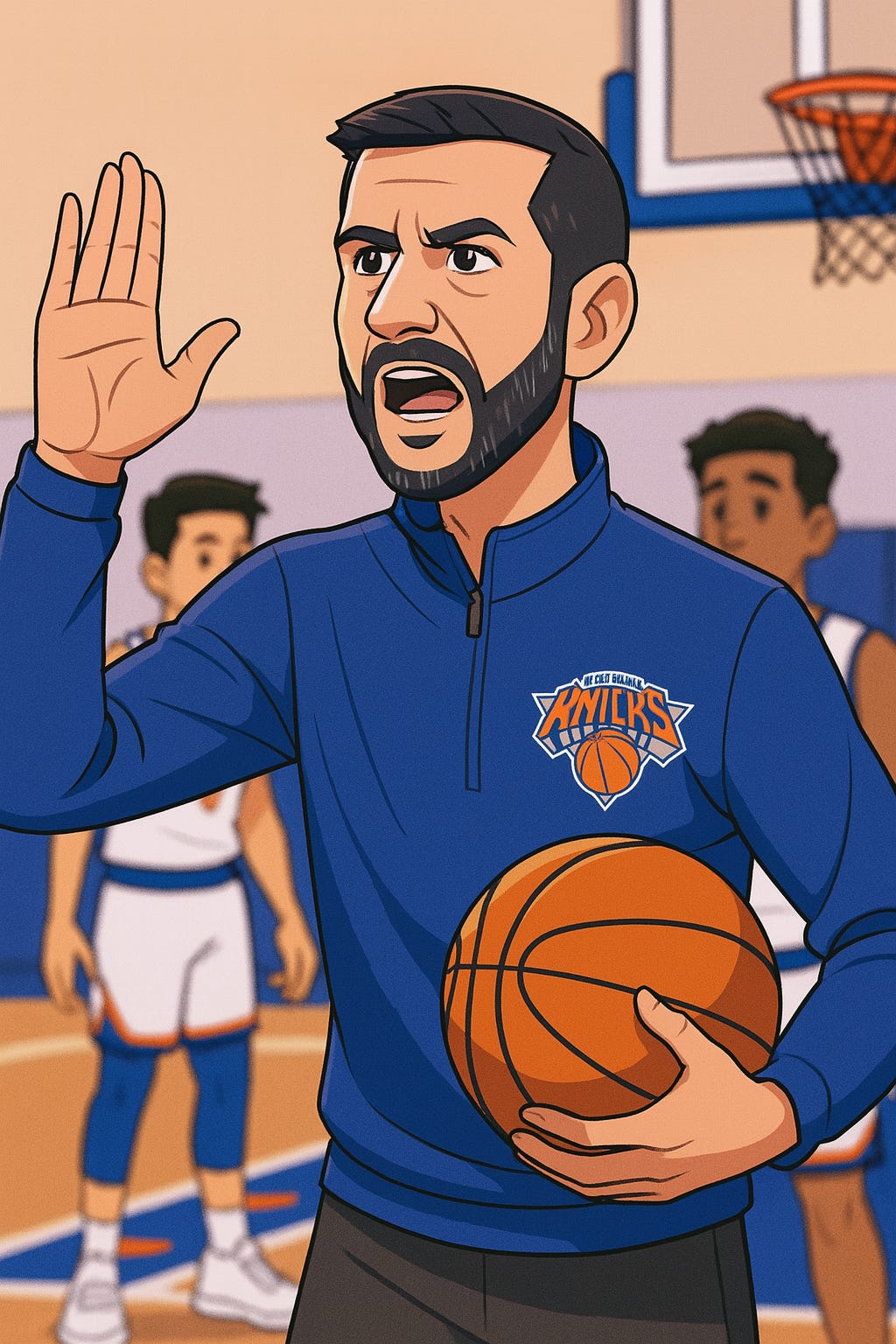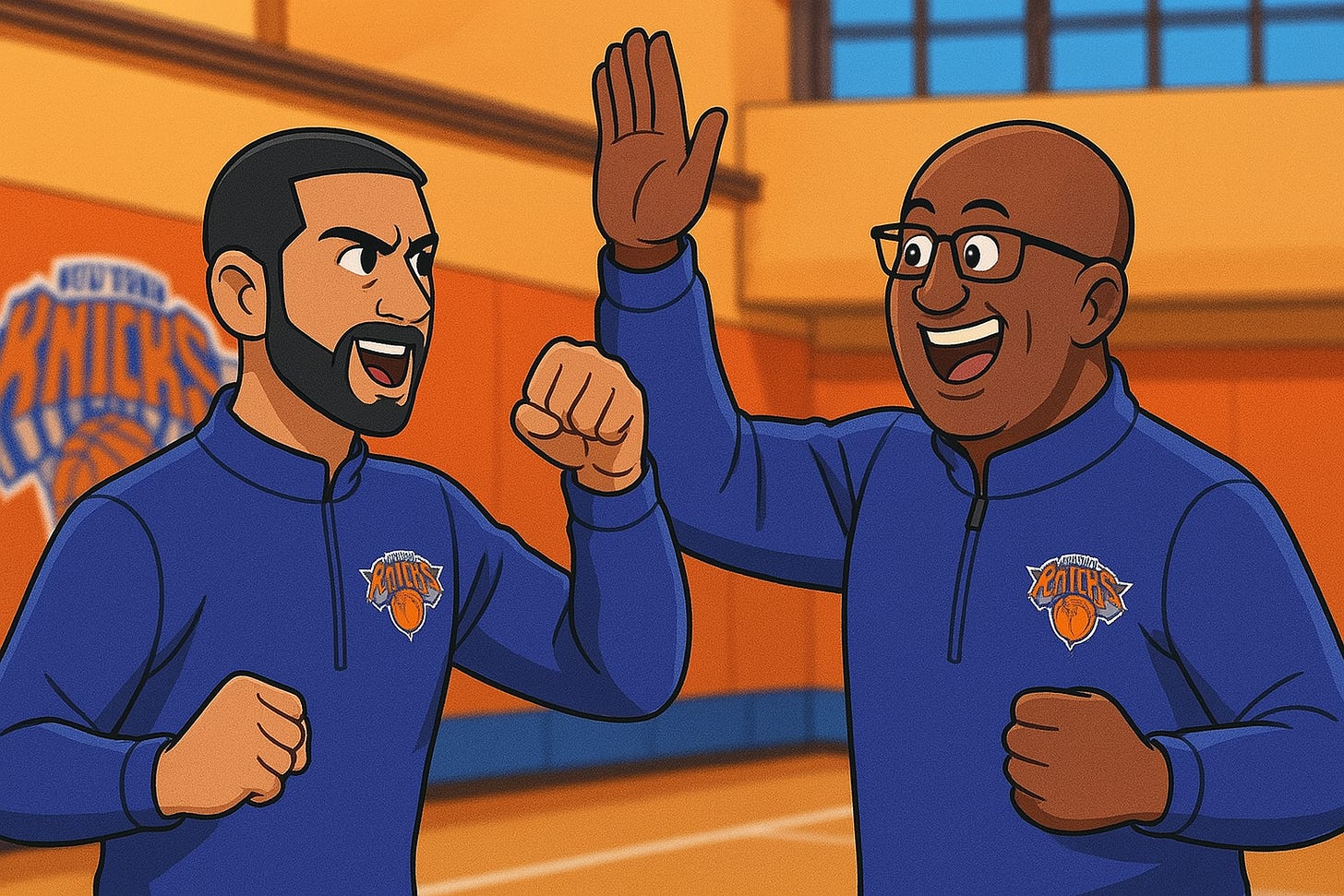Why James Borrego Could Be The Offensive Architect The Knicks Have Been Waiting For
In a potential pairing with new HC Mike Brown, Borrego would bring pace, spacing, and player development to a Knicks offense in need of a modern identity.
It’s official, according to Shams Charania, Mike Brown will be the next head coach of the Knicks. The Knicks have landed Brown and are widely considered to bring in James Borrego as his lead assistant, taking full command of the offensive system. On paper, it fits. In practice, it could transform this team into an offensive juggernaut.
This duo brings a modern basketball sensibility, rooted in player development, spacing, ball movement, and tactical flexibility. And that’s exactly what New York needs.
Why Borrego to the Knicks is more than just wishful thinking
As of July 1, the Brown-to-Knicks hiring has been confirmed. Brown has already completed a second interview this week with the team, one that included owner James Dolan, per SNY’s Ian Begley. He has officially accepted the job.
The real intrigue comes with who Brown wants next to him on the bench.
According to both Begley and longtime NBA insider Marc Stein, Brown views James Borrego as an essential part of his ideal coaching staff as he builds out his New York staff. That’s no throwaway endorsement. It speaks volumes about how Borrego’s offensive acumen is valued around the league—even among his coaching peers.
“James Borrego is currently employed by the Pelicans and under contract, so there would be hurdles to adding him to a potential Mike Brown coaching staff. Also, Knicks like Borrego, and he’s still viewed as a head coaching candidate at this point in the process. But Mike Brown does see Borrego as an important addition on his staff if the Knicks deal goes through,” Begley reported via X.
Borrego served as the associate head coach with the New Orleans Pelicans this past season, helping guide a young team with a top-10 offensive rating for much of the year. Before Borrego arrived, they posted a league-worst 93.5 in the previous season. His impact was obvious and profound. He also interviewed for the Knicks’ head coaching job earlier this summer, alongside Taylor Jenkins and Micah Nori. While he was a candidate, his availability as a lead assistant is now a key topic under Head Coach Mike Brown.
It’s worth noting: Borrego has already logged eight seasons as an NBA assistant, plus five as a head coach—including a four-year run in Charlotte where he developed LaMelo Ball and helped transform the Hornets into a top-six offense.
So yes, there would be some contractual hurdles with the Pelicans. But suppose the Knicks want to modernize their offense and empower a staff built on collaboration, movement, and player development. In that case, Brown and Borrego is the exact pairing to make that happen.
A modern offense finally comes to MSG
Let’s start with Borrego. His fingerprints were all over the Hornets’ offensive explosion during his time in Charlotte. In the 2021–22 season, his final year with the team, the Hornets:
Led the NBA in assists
Ranked sixth in offensive efficiency, per Cleaning the Glass
That is not a fluke. That is a system. One built around passing, pace, and paint touches. Consider what the Knicks have lacked, especially during heavy isolation stretches: dynamic spacing, flow offense, and off-ball actions that create easy looks for role players.
Borrego demands ball movement. His system is rooted in good-to-great shot creation, emphasizing early offense, advantage-based decision-making, and a shot diet of threes and rim attacks.
And the most exciting part? His teams run. Borrego-coached Hornets squads routinely increased three-point volume, generated clean corner looks, and played at a top-10 pace. The Knicks have improved offensively under Jalen Brunson’s leadership. They would take a meaningful leap with Borrego's principles, especially in transition, where they’ve been at the bottom of the league under Thibodeau.
Small-ball DNA through KAT
Running the Knicks offense through Towns would make Borrego’s vision seamless. Borrego has historically leaned into small-ball and skill-ball lineups. In Charlotte, he often used P. J. Washington at the center, embracing speed, spacing, and offensive flexibility—even if it comes at the cost of rim protection.
Under a new coach, it’s not hard to imagine Towns playing most of his time at center next year. This makes the extension for Mitchell Robinson crucial. Towns was exposed as a rim protector in drop coverage last season under Tom Thibodeau. A switching defense and more threes will help to make Towns less foul-prone and less of a net negative. Although today, Ian Begley reported the front office considered yeterday’s Guerschon Yabusele signing as a back up to a perceived starting line-up of Towns and Robinson. One has to imagine that call will be left up to the incoming head coach, and if it’s Brown, KAT matches much of Sabonis grounded skill-set at the five.
In New York, Towns gives you the offensive skill of a power forward with the size of a five. Borrego could immediately install him as the starting center, not just out of necessity, but because it fits his identity. Picture:
Real five-out spacing
Towns running dribble handoffs
Trail threes in early offense
Flow actions that pull rim protectors away from the basket
This setup would maximize Towns’ passing and stretch shooting while hiding some of his defensive limitations through Mike Brown’s switching schemes. Strategically, it is a solid blend of firepower and structure.
Just as important, Borrego and Brown could help solve Towns’ long-standing foul problem. One adjustment? Starting his dribble closer to the rim, either off slips, duck-ins, or short rolls, rather than extended isolation plays or unnecessary face-ups from 20 feet. Less time to gather equals fewer offensive fouls and fewer bailout drives. That matters.
Borrego would also ramp up Towns’ three-point volume, especially early in the clock. Not just pick-and-pop threes, but transition trails and quick-trigger spot-ups to punish drop coverage. The goal? Make his scouting report harder to counter. Stretch the floor vertically and horizontally, and suddenly the opposing five has a decision to make on every trip. It’s the kind of offensive role KAT was born to play, but has yet to fully realize.
In the 2024–25 season with the Knicks, Karl-Anthony Towns averaged 2.0 made three-pointers per game on 4.7 attempts, shooting 42.0% from beyond the arc. This efficiency underscores his capability as a stretch big. Under Borrego's system, emphasizing early offense and spacing, Towns' three-point attempts could increase, further leveraging his shooting prowess to challenge defenses.
Historically, during his tenure with the Minnesota Timberwolves, Towns showcased higher three-point volumes:
2019–20: 7.9 attempts per game, 41.2% shooting
2020–21: 6.3 attempts per game, 38.7% shooting
2021–22: 4.9 attempts per game, 41.0% shooting
These seasons highlight Towns' proficiency and comfort in taking a higher volume of three-point shots. Reintegrating this aspect into his game under Borrego's offensive system could further stretch defenses and capitalize on Towns' shooting abilities.
With Borrego scripting the offense and Brown overseeing accountability on the other end, this could be the most strategically optimized version of Towns we’ve ever seen.
Why McBride and Anunoby would especially thrive
Borrego’s coaching DNA is rooted in player development. Just ask LaMelo Ball, who became an All-Star under his guidance, averaging 20.1 points, 7.6 assists, and 6.7 rebounds in his second season after winning Rookie of the Year. Miles Bridges jumped from 13.0 points per game in 2019–20 to 20.2 in 2021–22, his final season under Borrego. Devonte’ Graham exploded from 4.7 PPG in 2018–19 to 18.2 PPG in 2019–20.
Terry Rozier went from a rotational guard in Boston to averaging 20-plus points per game in back-to-back seasons (2020–22). Malik Monk also saw a spike in efficiency and usage, posting a then-career-high 11.7 PPG on improved shooting splits in 2020–21. Under Borrego, the Hornets jumped from 23 wins in 2019–20 to 43 in 2021–22, powered by growth from within.
This bodes especially well for players like OG Anunoby and Deuce McBride—two ascending talents with defined upside but evolving offensive roles. During the Knicks' exit interviews last season, multiple players expressed frustration over the lack of clarity in roles, particularly for those outside the primary scoring trio (Brunson, Towns, Bridges). That ambiguity made it difficult for Anunoby and McBride to know which aspects of their shot diet or skill set they needed to refine. With Borrego’s structured developmental plans and emphasis on individualized growth, both players could finally unlock more consistent offensive identities.
Miles "Deuce" McBride
McBride is already one of the NBA’s premier point-of-attack defenders. Borrego would help him become a more efficient offensive player: decision-making in the paint, relocation shooting, and attacking closeouts. In Charlotte, guards were empowered early and held accountable as their roles grew. Expect McBride to be groomed as a trusted secondary creator.
OG Anunoby
Borrego loves using smalls as screeners and thrives with motion-based offense that creates mismatches. Anunoby would be more than just a spot-up option. Expect him in dribble handoffs, short rolls, and weakside actions designed to keep defenses rotating: fewer standstill isolations, more intuitive movement, and higher-efficiency looks.
A quick-hitting, high-paced offense
The Knicks ranked 28th in pace last season. That is going to change. Borrego does not just tolerate pace—he builds around it. His teams emphasize:
Push on both makes and misses
Early pick-and-rolls
Quick decisions within six seconds of crossing half court
He even installed spacing rules in Charlotte: 29 feet from slot to corner and 26 feet slot to slot (Nations of Coaches video). That kind of precision, urgency, and discipline would be transformational in New York.
Borrego also builds offenses around high-value shots: free throws, layups, and corner threes. He names and tracks them in drills: "Brady" for paint-to-kick threes and "Dart" for catch-and-shoot without penetration (Nations of Coaches video).
Flow in five parts
In the Nations of Coaches video series, Borrego (then with the San Antonio Spurs) broke his offensive system into five teaching chapters:
Quick Strike (transition/advantage situations)
Flow (60–65 percent of the offense: early action with no huddle)
Huddle (after dead balls or free throws)
Specials (after timeouts, SLOBs/BLOBs)
Play After the Play (how you finish broken possessions)
The Knicks have too often relied on first-option scoring or iso resets late in the clock. Borrego’s structured chaos would eliminate the dead possessions that plague this team.
Three-on-three reps and muscle memory
Borrego also emphasizes practice structure. At the Spurs, he installed plays via 3-man drills—first 3-on-0, then 3-on-3 live, building muscle memory through reps without the wear and clutter of full 5-on-5 breakdowns.
In this format, he drilled sets like "Strong" and second-side back screens. The result: more touches, faster development, and more accountability. The Knicks’ young roster would thrive in that simplicity.
Transition games and defensive drills
Borrego encourages efficient transition drills from both ends of the floor: 5-on-4 and 3-on-2, simulating real NBA transition reads. He also emphasizes rebounding through the elbows and building defense back through the middle third, which would become daily habits for the Knicks.
Borrego’s blind spots
Despite Borrego’s well-earned reputation as an offensive innovator and player development advocate, his tenure as head coach of the Charlotte Hornets revealed persistent shortcomings, many of which were made plain in the data. While his teams often moved the ball well and posted strong offensive metrics, there were critical blind spots in how he managed lineups, developed young talent, and built a reliable defensive identity.
One of the most glaring issues was his inconsistent handling of player rotations, particularly with rookies expected to be part of Charlotte’s long-term future. In the 2021–22 season, Borrego gave minimal playing time to three recent draft picks despite their potential and the team’s developmental focus. Kai Jones, taken 19th overall, played just 21 games and averaged a mere 3.0 minutes per outing. Fellow rookie JT Thor appeared in 33 games with only 8.8 minutes per night, and 11th overall pick James Bouknight was limited to just 9.8 minutes per game across 31 appearances, much of it in garbage time. This underutilization of youth sparked criticism and hinted at a disconnect between coaching priorities and front-office expectations.
Defensively, Borrego’s teams consistently lagged behind their offensive output. In 2021–22, the Hornets ranked 22nd in Defensive Rating (112.9), despite boasting the league’s 8th-best Offensive Rating. The trend was not new—Charlotte finished 18th in defense the season prior (112.2) and 23rd in 2019–20 (112.8). Across Borrego’s four seasons, the Hornets never ranked above 16th in Defensive Efficiency and were in the bottom 10 twice. His reliance on small-ball lineups that lacked rim protection and rebounding amplified these struggles. In his final season, Charlotte allowed opponents to shoot 66.3% at the rim (28th in the NBA) and gave up 14.1 second-chance points per game (26th), underscoring their vulnerability in the paint and on the glass.
In the postseason, the lack of defensive identity was perhaps most evident when it mattered most. Borrego’s Hornets suffered back-to-back blowout defeats in the NBA Play-In Tournament. In 2021, they fell to Indiana 144–117, allowing a season-high 144 points on 55.2% shooting. A year later, they were overwhelmed by Atlanta 132–103, giving up 22 fast-break points and a staggering 42 assists. These performances didn’t just end their seasons—they spotlighted systemic issues in transition defense, rotation communication, and in-game adaptability under pressure.
Partnership with Mike Brown
Borrego’s collaborative nature fits perfectly with Mike Brown’s structured, defensive-first identity. Both are Spurs disciples. Both empower staff. In Charlotte, Borrego gave his assistants meaningful leadership roles in practices and games. He leaned on coordinators and ran open huddles, making adjustments based on real-time staff feedback.
While Brown’s identity is rooted in toughness, discipline, and defensive execution built on structured coverages and set rotations, Borrego thrives in flow, creativity, and offensive freedom. Brown leans on predictability and accountability on the defensive end, while Borrego is more improvisational, especially in his spacing, pace, and advantage-based play calls. Brown likes to slow things down when necessary and control the tempo. Borrego prefers to push it, encouraging early offense and movement. That contrast is exactly why this pairing works. Brown sets the floor with defensive structure. Borrego raises the ceiling with offensive innovation.
Borrego can now work alongside a head coach who prioritizes the very areas that were his own blind spots: rotation management, interior physicality, and playoff-ready defensive execution.
This synergy allows the Knicks to leverage Borrego’s elite offensive mind without exposing him to the pressure points that undermined his tenure as a head coach. He can bring creativity and pace to the offensive side while trusting that Brown will reinforce the team’s defensive identity, manage minutes with clarity, and maintain a cohesive locker room structure, as Borrego lost an immature locker room in Charlotte.
Conclusion
This is no longer hypothetical. Mike Brown is the next head coach of the Knicks. If the front office is serious about building a sustainable two-way identity that blends defense, development, and modern offense, then adding James Borrego as lead assistant makes too much sense to ignore.
More threes. More pace. More freedom. More intention. If you are a Knicks fan tired of the Tom Thibodeau offensive grind, Borrego is your guy. And for Towns’ second season in New York? There may not be a better coach to unlock an MVP season.
Let’s see if New York makes the smart bet.








